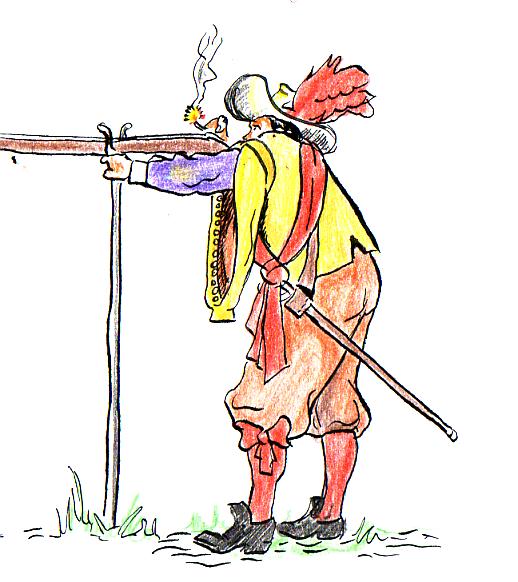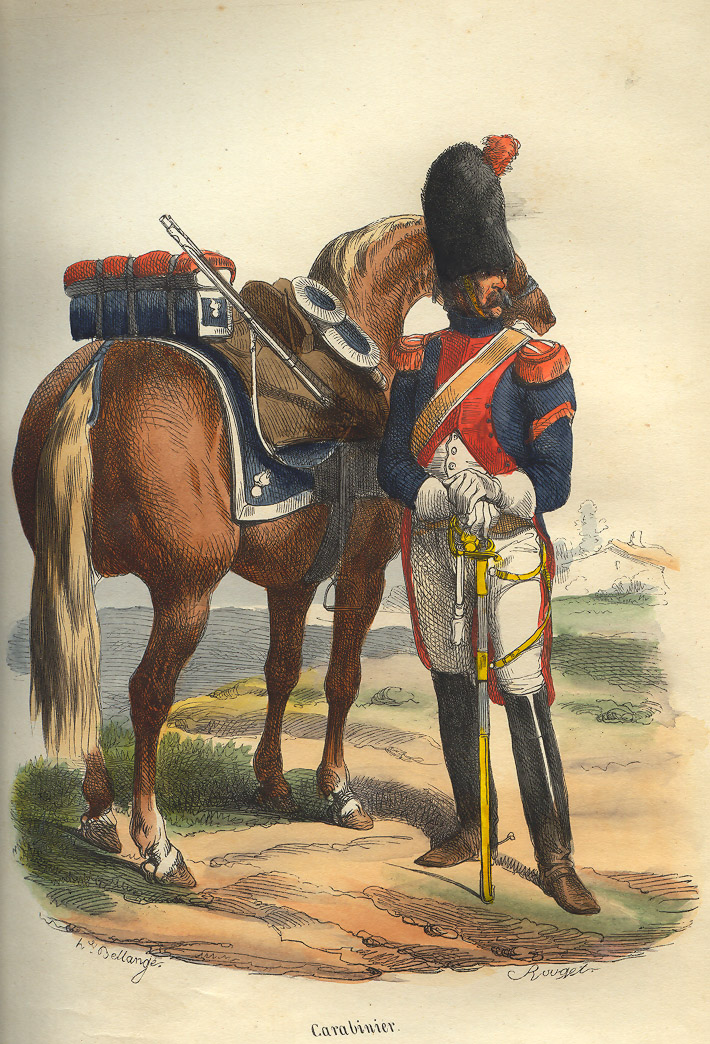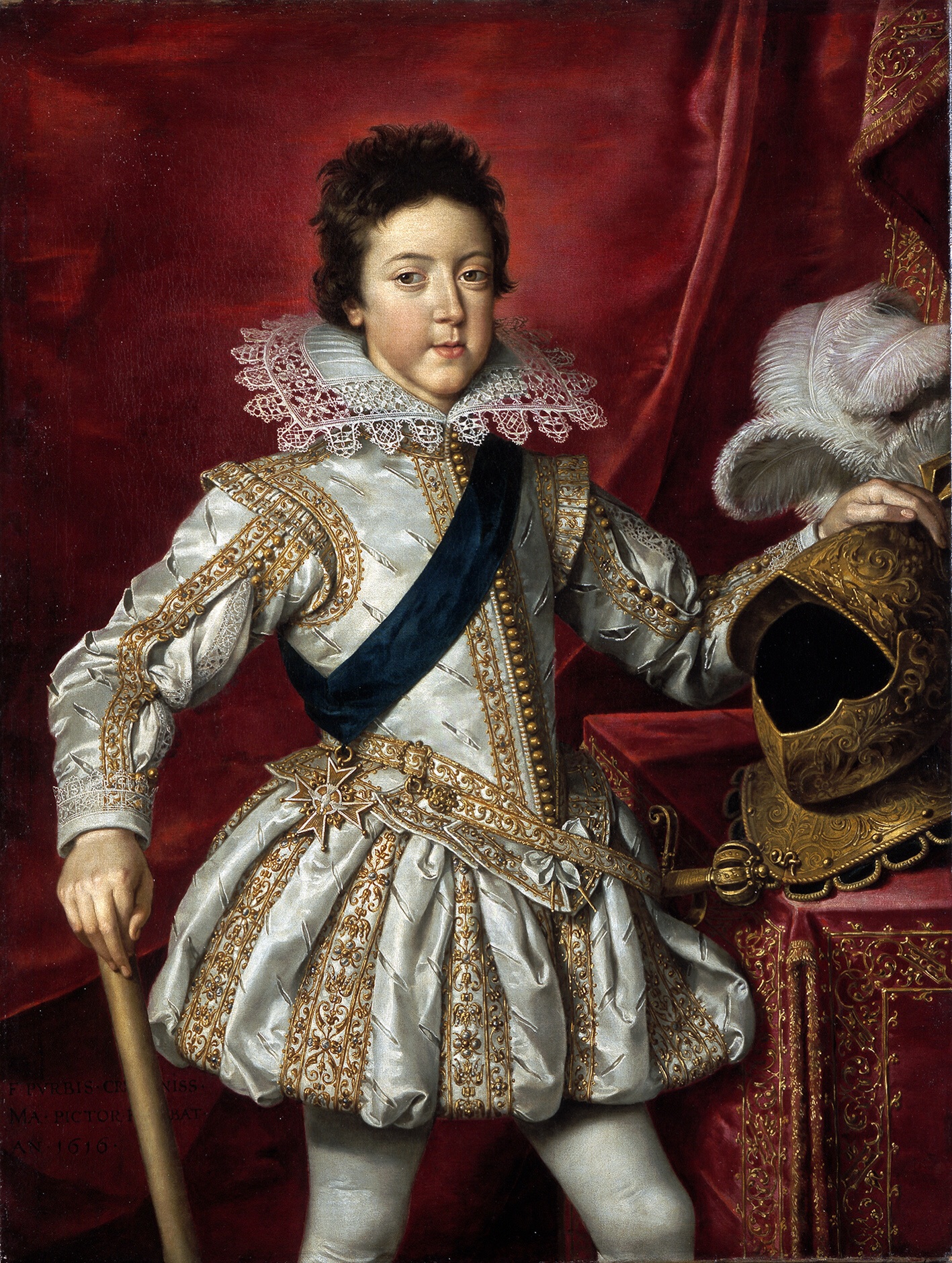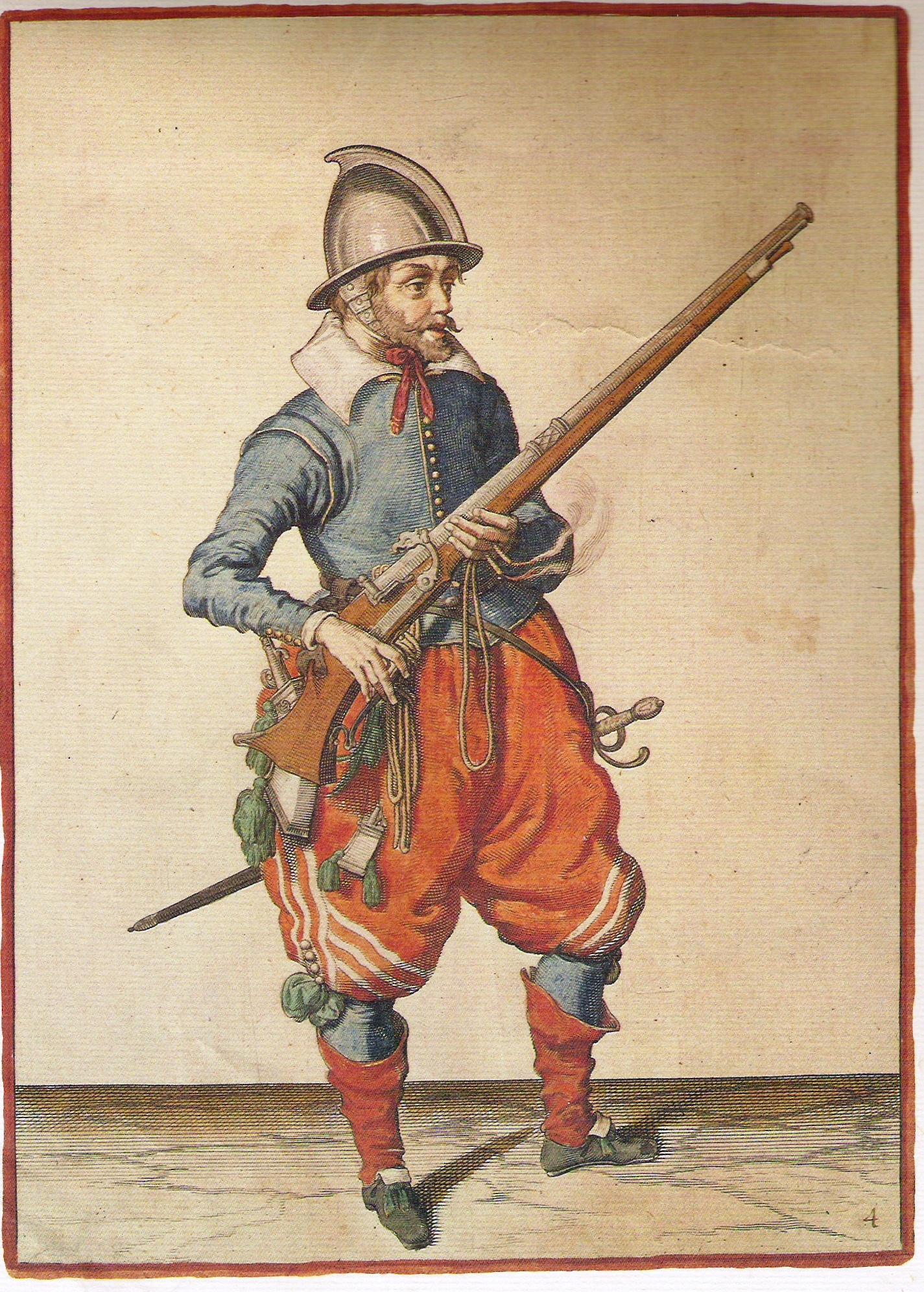|
Musketman
A musketeer ( ) was a type of soldier equipped with a musket. Musketeers were an important part of early modern warfare, particularly in Europe, as they normally comprised the majority of their infantry. The musketeer was a precursor to the rifleman. Muskets were replaced by breech loading rifles as the almost universal firearm for modern armies during the period 1850 to 1870. The traditional designation of "musketeer" for an infantry private survived in the Imperial German Army until World War I. Historical antecedents The hand cannon was invented in Song dynasty China in the 12th century and was in widespread use there in the 13th century. It spread westward across Asia during the 14th century. The hand cannon evolved into the arquebus that appeared in Europe and the Ottoman Empire during the 15th century. The term musket was originally used to describe a heavy arquebus capable of penetrating heavy armor. Although this heavy version of the musket fell out of use after the mid-16 ... [...More Info...] [...Related Items...] OR: [Wikipedia] [Google] [Baidu] |
Gendarme (historical)
A ''gendarme'' was a cavalry, heavy cavalryman of nobility, noble birth, primarily serving in the Early modern France, French army from the Late Middle Ages to the early modern period. Heirs to the knights of Medieval France, French medieval feudal armies, French gendarmes enjoyed like their forefathers a great reputation and were regarded as the finest European heavy cavalry force until the decline of chivalric ideals largely due to the ever-evolving developments in gunpowder technology. They provided the French kings, King of France with a potent regular force of armored lancers which, when properly employed, dominated late medieval and early modern battlefields. Their symbolic demise is generally considered to be the Battle of Pavia, which saw the gendarmes suffer a disastrous defeat and inversely confirmed the rise of the Tercio, Spanish Tercios as the new dominant military force, leading to the preeminence of the House of Habsburg in 16th century Europe. Etymology The word ... [...More Info...] [...Related Items...] OR: [Wikipedia] [Google] [Baidu] |
Battle Of Fontenoy
The Battle of Fontenoy took place on 11 May 1745 during the War of the Austrian Succession, near Tournai, then in the Austrian Netherlands, now Belgium. A French army of 50,000 under Maurice, comte de Saxe, Marshal Saxe defeated a Pragmatic Army of roughly the same size, led by the William Augustus, Duke of Cumberland, Duke of Cumberland. By 1745, Kingdom of France, France was close to bankruptcy, and the Austrian Netherlands offered the best opportunity for a decisive victory which would end it. In April 1745, Saxe Siege of Tournai (1745), besieged Tournai, a key strategic town on the upper Scheldt, compelling the main Allied army to march to its relief. Leaving 22,000 men to continue the siege, Saxe placed his main force about away in the villages of Antoing, Vezon and Fontenoy, along a naturally strong feature strengthened with defensive works. After several unsuccessful flank assaults which incurred heavy casualties, an Allied infantry column of 15,000 attacked the French ... [...More Info...] [...Related Items...] OR: [Wikipedia] [Google] [Baidu] |
Dragoons
Dragoons were originally a class of mounted infantry, who used horses for mobility, but dismounted to fight on foot. From the early 17th century onward, dragoons were increasingly also employed as conventional cavalry and trained for combat with swords and firearms from horseback. While their use goes back to the late 16th century, dragoon regiments were established in most European armies during the 17th and early 18th centuries; they provided greater mobility than regular infantry but were far less expensive than cavalry. The name reputedly derives from a type of firearm, called a ''dragon'', which was a handgun version of a blunderbuss, carried by dragoons of the French Army. The title has been retained in modern times by a number of armoured or ceremonial mounted regiments. Origins and name The establishment of dragoons evolved from the practice of sometimes transporting infantry by horse when speed of movement was needed. During the Spanish conquest of the Inca Emp ... [...More Info...] [...Related Items...] OR: [Wikipedia] [Google] [Baidu] |
Henry IV Of France
Henry IV (; 13 December 1553 – 14 May 1610), also known by the epithets Good King Henry (''le Bon Roi Henri'') or Henry the Great (''Henri le Grand''), was King of Navarre (as Henry III) from 1572 and King of France from 1589 to 1610. He was the first monarch of France from the House of Bourbon, a cadet branch of the Capetian dynasty. He pragmatically balanced the interests of the Catholic and Protestant parties in France, as well as among the European states. He was assassinated in Paris in 1610 by a Catholic zealot, and was succeeded by his son Louis XIII. Henry was baptised a Catholic but raised as a Huguenot in the Protestant faith by his mother, Queen Jeanne III of Navarre. He inherited the throne of Navarre in 1572 on his mother's death. As a Huguenot, Henry was involved in the French Wars of Religion, barely escaping assassination in the St. Bartholomew's Day massacre. He later led Protestant forces against the French royal army. Henry inherited the thro ... [...More Info...] [...Related Items...] OR: [Wikipedia] [Google] [Baidu] |
Carabinier
A carabinier (also sometimes spelled carabineer or carbineer) is in principle a soldier armed with a carbine, musket, or rifle, which became commonplace by the beginning of the Napoleonic Wars in Europe. The word is derived from the identical French language, French word ''wikt:carabinier#French, carabinier''. Historically, carabiniers were generally (but not always) Cavalry, horse soldiers. The carbine was considered a more appropriate firearm for a horseman than a full-length musket, since it was shorter in length, weighed less, and was easier to manipulate on horseback. Light infantry sometimes carried carbines because they are less encumbering when moving rapidly, especially through vegetation, but in most armies the tendency was to equip light infantry with longer-range weapons such as rifles rather than shorter-range weapons such as carbines. In Italy and Spain, carbines were considered suitable equipment for soldiers with policing roles, so the term ''carabinier'' evolved ... [...More Info...] [...Related Items...] OR: [Wikipedia] [Google] [Baidu] |
Light Cavalry
Light cavalry comprised lightly armed and body armor, armored cavalry troops mounted on fast horses, as opposed to heavy cavalry, where the mounted riders (and sometimes the warhorses) were heavily armored. The purpose of light cavalry was primarily raid (military), raiding, reconnaissance, screening (tactical), screening, skirmishing, patrolling, and tactical communications. Prior to the 17th century they were usually armed with swords, spears, javelins, or bow and arrow, bows, and later on with Sabre, sabres, pistols, shotguns, or carbines. Light cavalry was used infrequently by Ancient Greece, Ancient Greeks (who used hippeis such as prodromoi or sarissophoroi) and Ancient Rome, Ancient Romans (who used auxiliaries (Roman military), auxiliaries such as Numidian cavalry, equites Numidarum or equites Maurorum), but were more common among the armies of Eastern Europe, North Africa, West Asia, Central Asia, and East Asia. The Arabs, Cossacks, Hungarian people, Hungarians, Hu ... [...More Info...] [...Related Items...] OR: [Wikipedia] [Google] [Baidu] |
Louis XIII Of France
Louis XIII (; sometimes called the Just; 27 September 1601 – 14 May 1643) was King of France from 1610 until his death in 1643 and King of Navarre (as Louis II) from 1610 to 1620, when the crown of Navarre was merged with the French crown. Shortly before his ninth birthday, Louis became king of France and Navarre after his father Henry IV of France, Henry IV was assassinated. His mother, Marie de' Medici, acted as regent during his minority. Mismanagement of the kingdom and ceaseless political intrigues by Marie and her Italian favourites led the young king to take power in 1617 by exiling his mother and executing her followers, including Concino Concini, the most influential Italian at the French court. Louis XIII, taciturn and suspicious, relied heavily on his chief ministers, first Charles d'Albert, duc de Luynes and then Cardinal Richelieu, to govern the Kingdom of France. The King and the Cardinal are remembered for establishing the ''Académie française'', and ending ... [...More Info...] [...Related Items...] OR: [Wikipedia] [Google] [Baidu] |
Maison Du Roi
The Maison du Roi (, 'King's Household') was the royal household of the King of France. It comprised the military, domestic, and religious entourage of the French royal family during the Ancien Régime and Bourbon Restoration in France, Bourbon Restoration. Organisation The exact composition and duties of its various divisions changed constantly during the early modern period in France. Officers of the Maison du Roi were directly responsible to the ''Grand maître de France'' (Chief Steward). Starting in the 16th century and then from the 17th century on, the Maison du Roi was overseen by a ministry, the ''Département de la Maison du Roi'', directed by a secretary of state, the ''Secretary of State of the Maison du Roi, Secrétaire d'État à la Maison du Roi''. The structure of the Maison du Roi was officially reorganized under Henry III of France, Henry III in 1578 and 1585, and in the 17th century by Jean-Baptiste Colbert. The Military Maison du Roi The military branc ... [...More Info...] [...Related Items...] OR: [Wikipedia] [Google] [Baidu] |
Military Branch
Military branch (also service branch or armed service) is according to common standard a subdivision of the national armed forces of a sovereign nation or state. Types of branches Unified armed forces The Canadian Armed Forces is the unified armed forces of Canada. While it has three distinct commands - namely the Canadian Army, Royal Canadian Navy, and Royal Canadian Air Force - it remains a single military service. NATO definition ''Branch of service'' (also ''branch of military service'' or ''branch of armed service'') refers, according to NATO standards, to a branch, employment of combined forces or parts of a service, below the level of service, military service, or armed service. See also * List of militaries by country * Military organization Military organization (American English , AE) or military organisation (British English , BE) is the structuring of the armed forces of a State (polity), state so as to offer such military capability as a military policy ... [...More Info...] [...Related Items...] OR: [Wikipedia] [Google] [Baidu] |
Musketeers Of The Guard
The Musketeers of the military household of the King of France ( or ''compagnie des mousquetaires du roi''), also known as the Musketeers of the Guard () or King's Musketeers (), were an elite fighting company of the military branch of the Maison du Roi, the royal household of the French monarchy. History They were founded in 1622 when Louis XIII furnished a company of light cavalry (the ''carabins'', created by Louis' father Henry IV) with muskets. The Musketeers fought in battles both on foot (infantry) and on horseback (cavalry). They formed the royal guard for the king while he was outside of the royal residences (within the royal residences, the king's guard was the '' Garde du corps'' and the '' Gardes suisses''). The Musketeers of the Guard wore an early type of military uniform with a tabard (known as ''soubreveste''), indicating that they "belonged" to the King, and an embroidered white cross denoting the fact that they were formed during the Huguenot rebellions in ... [...More Info...] [...Related Items...] OR: [Wikipedia] [Google] [Baidu] |
Mousquetaires Du Roi
A musketeer ( ) was a type of soldier equipped with a musket. Musketeers were an important part of early modern warfare, particularly in Europe, as they normally comprised the majority of their infantry. The musketeer was a precursor to the rifleman. Muskets were replaced by breech loading rifles as the almost universal firearm for modern armies during the period 1850 to 1870. The traditional designation of "musketeer" for an infantry private survived in the Imperial German Army until World War I. Historical antecedents The hand cannon was invented in Song dynasty China in the 12th century and was in widespread use there in the 13th century. It spread westward across Asia during the 14th century. The hand cannon evolved into the arquebus that appeared in Europe and the Ottoman Empire during the 15th century. The term musket was originally used to describe a heavy arquebus capable of penetrating heavy armor. Although this heavy version of the musket fell out of use after the mid-16 ... [...More Info...] [...Related Items...] OR: [Wikipedia] [Google] [Baidu] |









